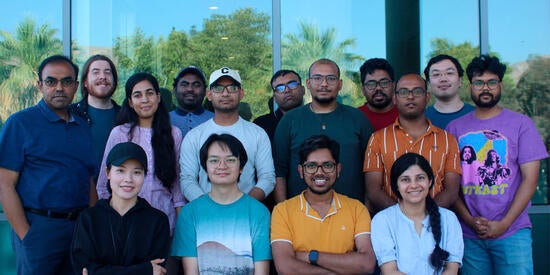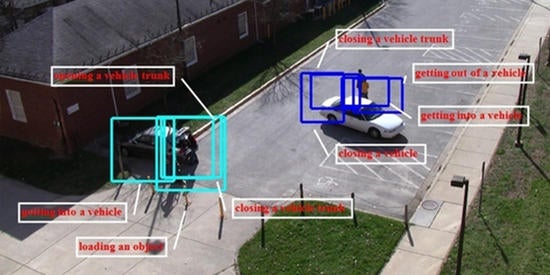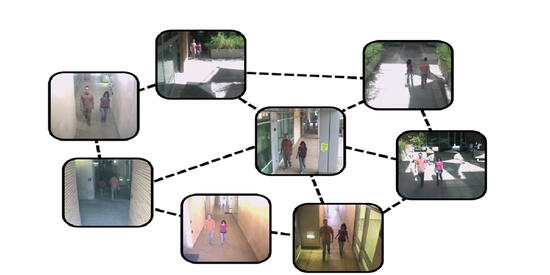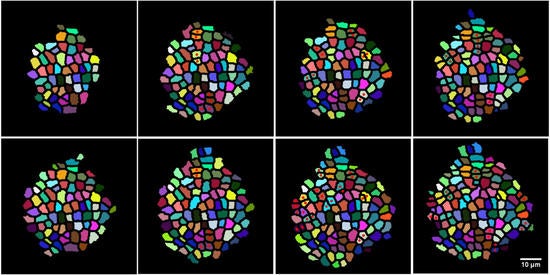Camera Networks
Networks of cameras are nowadays installed in various places. However, most of the data collected by such networks are analyzed manually, thus severely limiting their application. In this research, which is divided into different sub-projects, we are studying the core scientific and technical issues related to camera networks, such as target reidentification, active sensing, and distributed estimation.
Camera Network Tracking and Re-identification
In many computer vision tasks, it is often desirable to identify and monitor people as they move through a network of non-overlapping cameras. In this project, we try to address this inter-camera person association problem. We have shown that incorporating a consistency requirement of re-identification results across the camera network can significantly improve the re-identification performance even in the challenging scenarios where the illumination changes between the cameras are large [TPAMI]. We have also shown how to reduce the effort in learning re-identification models by considering such consistency requirements.
More recent work in this domain has focused on how to drastically reduce the labeling effort through weakly supervised and one-shot learning approaches for target re-identification, both in images and in videos.
A summary of our work on person re-identification is available in our monograph on this topic.
Dynamic Camera Networks
The above methods assume that the camera network is fixed. However, in many cases, the network may change over time, e.g., new cameras may be added or removed. In recent work, we have shown how to seamlessly add new cameras to an existing network without requiring access to the source data used to train the models on the initial set of cameras.
We have also developed methods for optimizing the image acquisition capabilities of the cameras by controlling their pan, tilt, and zoom capabilities, or even their locations. This needs to be done through collaboration between the cameras in a network, as each camera's parameters entail constraints on the others. We have developed distributed control methods for collaborative and opportunistic sensing in wide-area camera networks [TIP, TCSVT, TCST]
Distributed Estimation in Camera Networks
For situations where all the data from the cameras may not be available at a central location, we have developed distributed estimation strategies that consider the directional nature of most cameras. Building upon well-known consensus algorithms, we have developed methods for distributed tracking and data association in camera networks. The fundamentals of the Information-Weighted Consensus Filter were presented in T-AC and those for the Multi-target Information Consensus in CVPR and T-PAMI.
This work has been supported by NSF and ONR
Parts of this work have been supported by the NSF CPS program under the project Distributed Sensing, Learning and Control in Dynamic Environments.



